




Introduction
Message from The Silkwood Way Founder ‘Why’ The Silkwood Way Learning Design
Overview ‘The Silkwood Way’ Learning Design TSW Learning Frames in Detail 1. Learning In The Silkwood Way in detail 2. The Silkwood Way Differences 3. Saying ‘YES’ to The Silkwood Difference 4.
Glossary of Silkwood-Specific Terminology
At Silkwood School we redefine education to nurture lifelong learners. Located on the Gold Coast, we create innovative learning communities that use the world as their campus Our mission supports young people in developing personalised learning pathways tailored to their interests and future aspirations. The Silkwood Way emphasises personalised learning and real-world experiences, fostering entrepreneurial thinking, personal growth, and a deep connection with the world.
Our dedicated educators, parents, and mentors provide rich learning experiences, from hands-on projects and internships to outdoor adventures and philosophical inquiries. We create a supportive and inclusive environment where every student can flourish, develop critical skills, and achieve their full potential.
Twenty-five years ago, as a mother seeking an empowering educational experience for my two young girls, a seed was sown, and so grew the Silkwood Vision:
Supporting young people to be inspired, get connected and feel empowered to make a positive difference in their lives and the world.
This Vision has guided Silkwood from its humble beginnings with just a Prep class of two students (one being my daughter) in 1997 to include two beautiful campuses with over 800 students. It has and continues to provide a transformative learning journey for thousands of young people from Prep to Year 12. It is this Vision that inspired the development of what we proudly know today as:
The Silkwood Way, our transformative 21st-century Learning Design. For this reason, you won't find our program anywhere else – it is unique!
We know our students are the:
Designers and creators
Innovators and change agents
Enterprise makers and entrepreneurs
Carers and leaders
...of our world.
WE BELIEVE IT IS OUR RESPONSIBILITY TO SUPPORT THEM TO:
Have hope for their future
Know and see the boundless possibilities for their lives
Create and take opportunities to make positive things happen in their lives and our world.
The Silkwood Way Learning Design puts this front and centre.
Our team is committed to:
Giving our best to enact The Silkwood Way Learning Design
Thinking outside the square to enhance the learning adventure for each student
Ensuring each student is on the learning path that is right for them
I am proud and privileged to lead this team. A team committed to making a difference in young people's lives and transforming education in our world
I look forward to supporting you on your Silkwood journey so that you can discover, firsthand, what makes ‘The Silkwood Way’ unique for your young person.
Valerie Campbell-Hogg CEO & Founder of The Silkwood
Way


The traditional education model was born out of an era when content knowledge was the measure of intelligence, and there was a need to grow an industrialised workforce. The world and the workplace have dramatically shifted since this time.

SUCCESS IN THE 21ST CENTURY REQUIRES A DIFFERENT SKILL SET:

DESIGN & CRITICAL THINKERS
INNOVATORS

CHANGE AGENTS

ENTREPRENEURS
People who can adapt to a quickly changing world, take charge of their work choices, communicate effectively, and turn ideas into action. We believe education must evolve to reflect this shift.
Schooling focused on standardised subjects and tests to measure knowledge is not designed to lead this change.
Young people need something different; they need an opportunity to:
Self-manage and lead their learning
Learn things that are purposeful for their future
Learn in the real world
Learn about things they are interested in
Learn in different ways.
IN RESPONSE TO THIS, WE HAVE INTENTIONALLY DESIGNED:
The Silkwood Way, a new learning design that is leading this change.
The Silkwood Way gives each young person a personalised way of learning with individualised and interest-based goals focused around 21st century capabilities.
One where creativity, thinking, knowledge and real-world experiences are developed.
One that grows a young person’s life capabilities while keeping their curiosity alert.
One where they learn to reflect, assess, and set their own goals for improvement.
One that supports them to be empowered to take charge of their learning
We believe this is a change for the better a transformative educational design that places the student and their personalised learning plan, rather than a standardised curriculum with tests, at the centre of decision-making.
So young people can grow into adulthood with the capabilities to thrive in the world.
We define these capabilities through The Silkwood Way Aims: To see the adventure, opportunity, connections, and possibilities in life.
To use creative, innovative, and critical thinking to make a difference.
1 3 5 7 9 2 4 6 8 10
To create financial independence in win/win ways.
To communicate with empathy, openness, and integrity
To turn dreams and ideas into reality.
To create a happy and healthy life balance.
To accept life’s challenges with a resilient and flexible attitude.
To embrace fun and live with curiosity.
To act with respect towards themselves, others and our world.
To use passion, talent, and skills to create engaging work that contributes positively to our world.
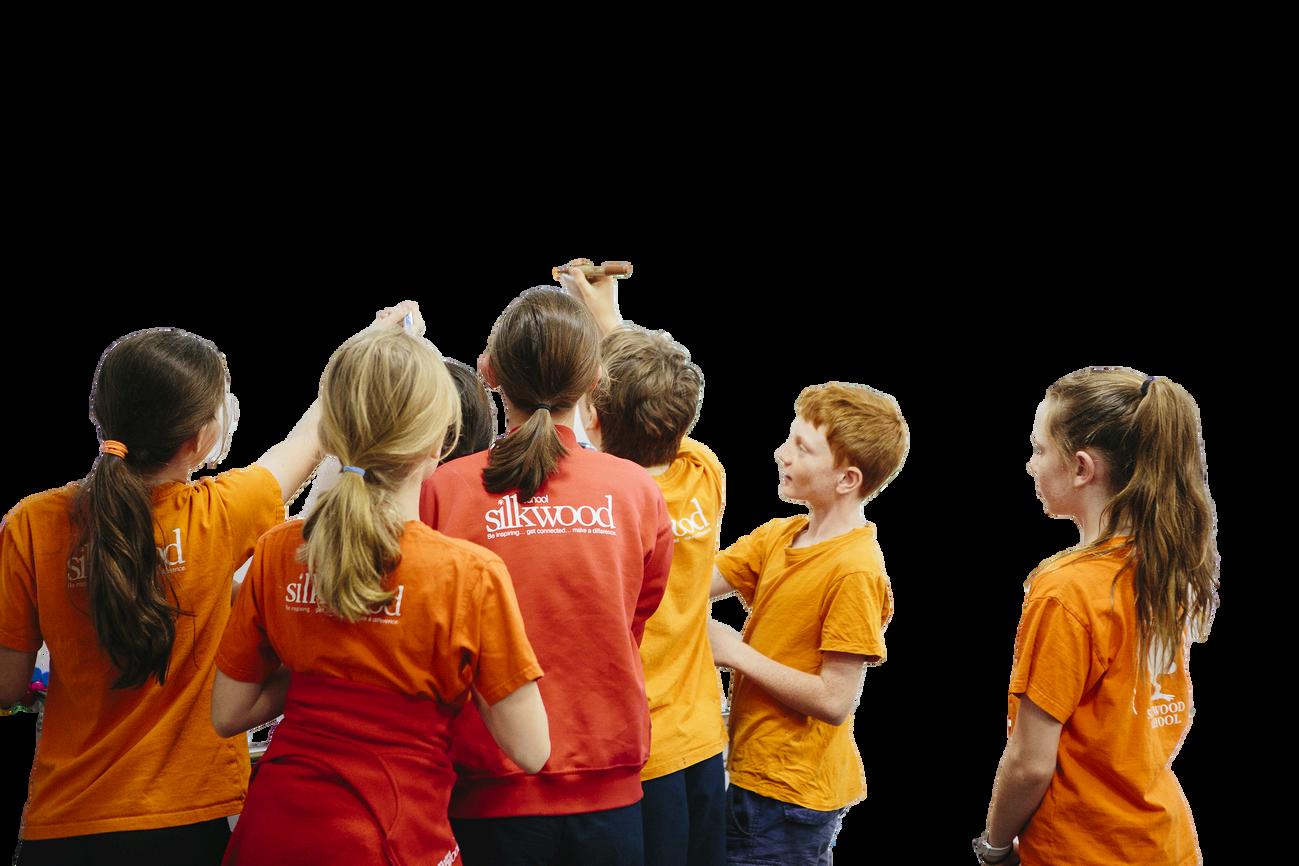

WHY? THE SILKWOOD WAY AIMS:
This is the purpose and heartbeat of The Silkwood Way Learning Design and what sets us apart from other schools.
There is no other school with these Aims at its heart, nor designed in our unique way.
THE SILKWOOD WAY:
Has REIMAGINED education
Is RECLAIMING a love of learning for young people Is PREPARING young people for a changing world.
We are transforming how students learn and how families engage with education through our Vision:
Supporting young people to be inspired, get connected and feel empowered to make a positive difference in their lives and the world.
This is The Silkwood Way!

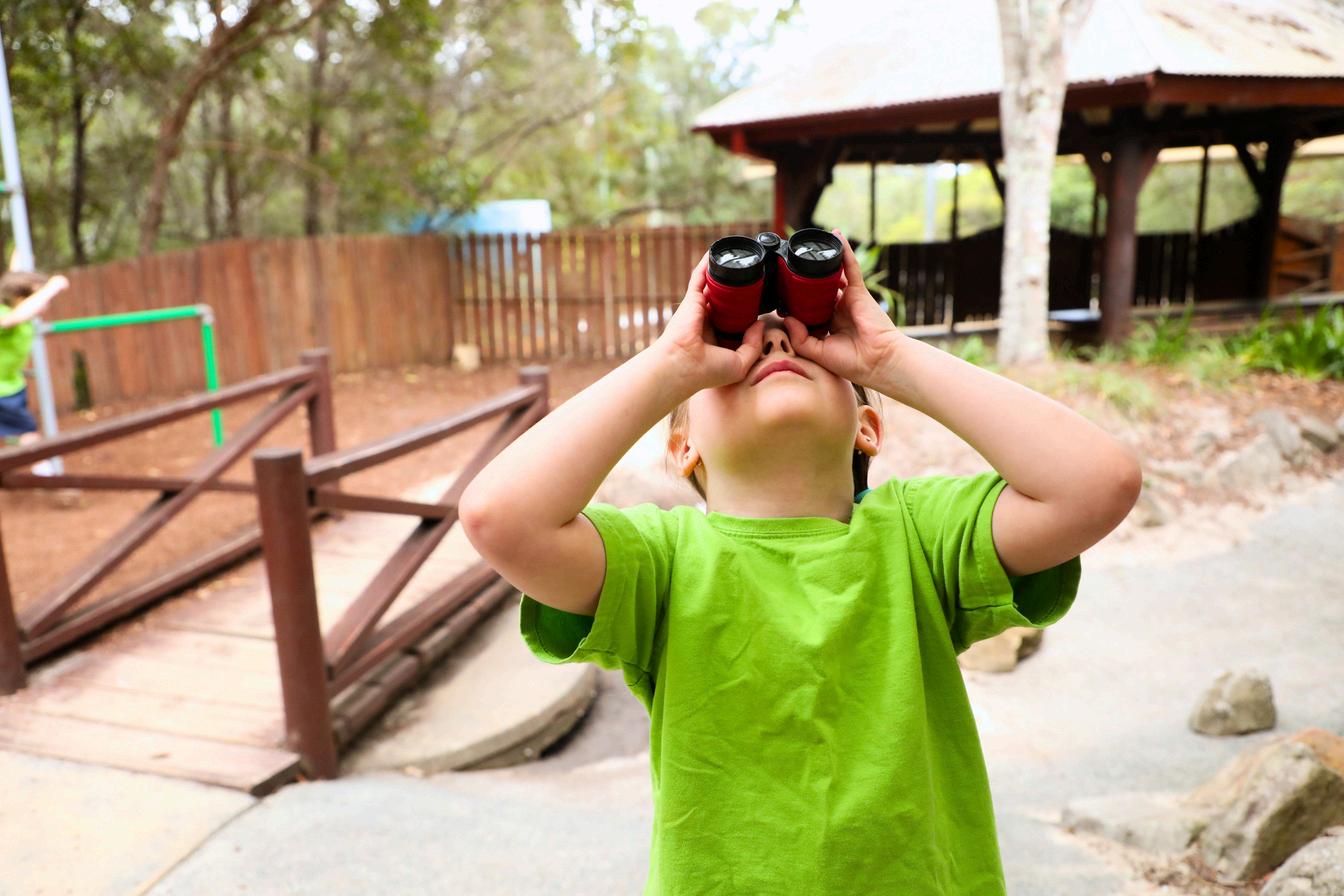
The Silkwood Way Learning Design is ‘how’ we deliver on our Vision, Purpose, and Aims.
O U R
V I S I O N

P U R P O S E
Supporting young people to be inspired, get connected and feel empowered to make a positive difference in their lives and the world.
To see young people grow into adulthood with the capabilities to thrive in the world.
We define these capabilities through The Silkwood Way Aims:
To use creative, innovative, and critical thinking to make a difference.
To accept life’s challenges with a resilient and flexible attitude. 1 3 5 7 9 2 4 6 8 10
To see the adventure, opportunity, connections, and possibilities in life.
To create financial independence in win/win ways.
To communicate with empathy, openness, and integrity
To turn dreams and ideas into reality.
To create a happy and healthy life balance.
To embrace fun and live with curiosity.
To act with respect towards themselves, others and our world.
To use passion, talent, and skills to create engaging work that contributes positively to our world.
It begins with eight Learning Principles that frame the design and act as the compass to align decisions about ‘what’ the design looks like and ‘how’ it is implemented.
Our eight Learning Principles are:
We align student learning experiences and strategies to physical and emotional developmental stages.
EXPLORING AND EXPANDING INTERESTS
We continuously engage students in learning experiences that grow and expand their interests.
We partner with each student to develop a personalised learning profile and individual learning plan that reflects their growth needs and interests.
We make learning visible so students can progress their learning, develop a growth mindset and become confident in directing their own learning process.
We connect student learning to real-world experiences and mentors.
We create defining moments that lead to positive, enduring memories on a student’s learning journey.
We see learning is a partnership that involves the student, the school team, families, and the wider community.
ENTREPRENEURIAL AND CREATIVE THINKING
We actively develop skill to support students to think outside the square, use a business mindset, see opportunities, communicate effectively, problem-solve, and take considered risks.
Underpinning the Learning Design is a student’s Personal Learning Profile. We refer to this as a PLP.
The PLP is an evolving profile that includes:
A Learning Profile‘Who’ the student is, ‘How’ they learn, and their interests
Attendance, behaviour, and wellbeing data
The student’s Individual Learning Plan (ILP)
A dashboard that tracks learning progress
Reflection and feedback on progress
An assessment portfolio.
The Personal Learning Profile (PLP) is central to all planning and progress discussions, helping Advisors and students to:
Set quality learning goals
Guide and track individual student progress
Personalise learning to a student's interests and learning and emotional needs.
Th rt of pe
PERSONALISE LEARNING TO A STUDENT'S INTERESTS, AND LEARNING AND EMOTIONAL NEEDS
SET QUALITY LEARNING GOALS GUIDE AND TRACK INDIVIDUAL STUDENT PROGRESS

THIS IS THE HEART OF THE SILKWOOD WAY LEARNING DESIGN
Bringing The Silkwood Way Learning Design to life are eight Learning Pathways.
LEARNING PATHWAYS:
21ST-CENTURY COMMUNICATION CRITICAL THINKING
21ST-CENTURY NUMERACY
PERSONAL AND SOCIAL DEVELOPMENT
ETHICAL AND INTERCULTURAL AWARENESS
ENTREPRENEURIAL AND CREATIVE THINKING
THE ARTS
LEARNING ‘HOW’ TO LEARN
These act like a curriculum as they define ‘what’ students learn. However, unlike traditional curricula, they are not based around standardised year-level subjects. Instead, they focus on content, skills, and capabilities that are essential for thriving in the 21st century - The Silkwood Way Aims.
To use creative, innovative, and critical thinking to make a difference
To see the adventure, opportunity, connections, and possibilities in life.
To create financial independence in win/win ways.
To accept life’s challenges with a resilient and flexible attitude.
To communicate with empathy, openness, and integrity.
To embrace fun and live with curiosity.
To turn dreams and ideas into reality.
To act with respect towards themselves, others, and our world
To create a happy and healthy life balance.
To use passion, talent, and skills to create engaging work that contributes positively to our world.
For mana strands o

Y E A R - L
P R O G R
I N D I V I
S T U D E
P R O G R
With guid progress
This ensu needs on each stud

Enacting The Silkwood Way Learning Pathways involves two interconnected planning cycles the Student Planning Cycle, which focuses on developing Individual Learning Plans (ILPs) for each student, and the Advisory Planning Cycle, which focuses on developing the Advisory (class) Learning Plan (ALP). These cycles involve Advisors, parents/carers, mentors, and, most importantly, the student, working collaboratively to develop and progress these plans.
Focused on developing Individual Learning Plans (ILPs) for each student
PLANNING CYCLE
We use the following steps to do this:
1
Using the learning progressions, students set their individual learning goals in their ILP with the support of their Advisor
Both learning cycles culminate in a student-led exhibition, where students proudly showcase their learning progress to their families, mentors, and Advisors, celebrating their growth and achievements
2
ADVISORY PLANNING CYCLE
Focused on developing the The Advisory (class) Learning Plan (ALP)
Advisors then take their students' ILP goals and develop advisory learning goals within their ALP, aligning with the broader educational objectives
During the term, students work collaboratively with their Advisors to review and adjust their learning goals in response to progress and challenges encountered along the way
This keeps each student’s individual learning plan and Advisory Learning Plan responsive and relevant to the unique needs for each student in the advisory There are two Student Planning Cycles a year and over time students’ learn the skills to self-manage the steps in their cycle themselves.
As steps in both planning cycles - The (ALP) and (ILP) goals inform and develop into an:
Advisory Learning Program and, Individual Student Learning Program

An individualised program focused on mastering English and Math skills needed for success in the 21st century.

An individualised program to support students to progress their physical, social, and emotional capabilities.
These programs are structured around four learning frames, which give students the opportunity to learn with a variety of learning styles and in group, individual and personalised ways.

A project-based program focused on exploring students' personal interests and passions and connecting these to real-world learning.

A year-level developmental program focused on age-appropriate content and experiences to:
Expand students’ knowledge about our cultural and natural world
Extend communication and financial literacy skills
Build capacity to be adventurers, performers, artisans, sportspeople and enterprisers.
To develop the Advisory Learning Program, Advisors take their advisory learning goals, which incorporates the student’s ILP goals, and sets these around the four learning frames in their Advisory Learning Plan (ALP).
ADVISORY LEARNING PLAN
ADVISORY LEARNING GOALS
Learning Pathways
21st Communication
21st Numeracy
Creative and Entrepreneurial Thinking
Ethical and Intercultural Awareness
Personal and Social Development
The Arts Learning ‘How’ to Learn Critical Thinking
This maps out the plan for their Advisory Learning Program, from which they then plan and resource lessons.
During start-up week, Advisors use their Advisory Program as a guide when collaborating with students to finalise their goals and develop their individual learning program.
STUDENT LEARNING PROGRAM
21st Communication
21st Numeracy
Creative and Entrepreneurial Thinking
Ethical and Intercultural Awareness
Personal and Social Development
The Arts
Learning ‘How’ to Learn Critical Thinking
This aligns both programs and ensures students attend the group advisory lessons and have the personalised learning time they need to progress their goals.


Advisory (class) and individual student Timetables are drawn from these programs
In Junior and Primary School, there is more group and less personalised learning time in timetables as each student’s learning progression points are much closer together, so they have similar goals.
In Middle School, as each student’s learning goals grow more diverse, a wider band of personalised learning time grows in the timetables.
In Senior School, learning goals are very diverse, resulting in mostly personalised learning time in advisory and student timetables
In response to the regular progress meetings in the planning cycles, ongoing adjustments are made to both the advisory and an individual student’s Learning Program and Timetables.
As a result of these processes, each Advisory and Student Learning Program is unique, flexible, and constantly evolving. It delivers essential year-level learning experiences while responding to each student’s individual needs and interests, ensuring a personalised experience for every student and advisory class.
For the success of TSW Learning Design, it is vital that each student feels empowered on their Silkwood journey. Learning in The Silkwood Way defines how this looks. It is our unique pastoral care approach that supports the Learning Program.
It encompasses The Silkwood Way...
How we lead and organise our campuses to ensure we have small learning communities.
A program of intentionally created Silkwood traditions acknowledges, celebrates, and honours a student's journey while creating unforgettable memories.
DEVELOPMENTAL PHASES
How we bring about an age-appropriate (developmental) focus, approach, and feel to student learning.
How we create an environment that enables students to: Self-manage
Focus on learning
Learn together respectfully
Strengthen and support their social and emotional development.
The Silkwood Way Learning Design brings the Vision, Purpose, Mission and The Silkwood Way Aims to life
It begins with eight Learning Principles that frame and guide decision-making around the Learning Design
Interconnecting and sitting at the heart of the Learning Design is a Student’s Personal Learning Profile
The Silkwood Way Learning Pathways step out the Aims into progressions of learning These form The Silkwood Way Learning Journey and are the pathways that each student progresses along to achieving The Silkwood Way Aims.
Student and Advisor Learning Plans and Cycles develop these progressions into student learning goals.
These learning goals are then set into play through The Silkwood Way Learning Program. Supporting the Learning Program is Learning in The Silkwood Way. This is our unique pastoral care approach. It encompasses the way we lead and organise our campuses, how students learn together (our student culture) and how they are supported with their wellbeing and learning
This makes up our transformative and unique Learning Design – The Silkwood Way
THE SILKWOOD WAY VISION
Supporting young people to be inspired, get connected and feel empowered to make a positive difference in their lives and the world.
THE SILKWOOD WAY STUDENT AIMS
To see young people grow into adulthood with the capabilities to thrive in the world. We define these capabilities through ‘The Silkwood Way’ Aims.
These frame the design and act as the compass to guide and align the decisions about 'what' the design looks like and 'how' it is implemented
ADVISORY PROGRAM
STUDENT INDIVIDUAL LEARNING PLANS
STUDENT PLANNING CYCLE
Focused on developing Individual Learning Plans (ILPs) for each student
ADVISORY LEARNING PLAN
LEARNING PATHWAYS
These combine Australian Curriculum standards with critical 21st-century skills defining what students learn
STUDENT PERSONAL LEARNING PROFILE (PLP)
This is the heart of personalising our Learning Design It is essential for making informing decisions, tracking progress, and tailoring to individual student needs and interests
ADVISORY PLANNING CYCLE
Focused on developing the The Advisory (class) Learning Plan (ALP)
LEARNING IN THE SILKWOOD WAY
Supporting Silkwood’s Learning Program and building on the Advisory Model is ‘Learning in The Silkwood Way’, our unique student engagement wellbeing, and behaviour strategy This forms our pastoral care approach and flows across the entire design
In Essential Learning, we are following in the footsteps of Finland’s much-lauded educational program – by paring back explicit math and English teaching to only those skills that are building blocks for functional development and vital 21st-century life skills
These skills are mapped out in the math and English individual student progressions, ensuring each student has individualised goals appropriate to their skill level and capability
As any well-researched 21st-century schooling program understands, foundational math and English skills are important building blocks to all learning. For this reason in Essential Learning we use highly successful evidence-based literacy and numeracy methods that align with Silkwood’s approach
The essential skills are assessed at a mastery level to ensure students have integrated the skill and are ready to move on to the next building block.


In Essential Learning, lessons are simple and direct. Students are given focused time to make progress using an explicit, targeted approach. The more time and focus they dedicate, the quicker their progress will be.
This provides a point of difference to the traditional education model, which focuses on teaching the same year-level content to each student regardless of prior competency.
Once a student has completed all of the skills in the Essential Math and English learning progressions, they continue to extend their math and English skills in the other learning frames through the 21st-century communication and numeracy pathways.


The Exploring Learning Frame focuses on Silkwood-inspired developmental (ageappropriate) content, hands-on learning experiences, and inquiry approaches to engage students in:
Expanding their knowledge and understanding of our natural world and cultural differences
Extending their communication and financial literacy skills
Building their capacity to be physically active, adventurers, performers, artisans, sportspeople, and enterprisers.
Using the year-level progressions, which have integrated traditional subjects in the Australian Curriculum of:
Science
Humanities and the Social Sciences
Technologies
Health and Physical Education
The Arts.
Advisors plan their advisory exploring time into sessions, which may include short daily or extended blocks of time, through the following learning experiences:
Inquiry Projects (Exploring and a Community Project)
Experiential, hands-on activities
Sports and games
Specialist Italian
Specialist Music
Age-appropriate competitions.
They ensure that these experiences support students to:
Discover and explore new interests
Have authentic learning connections to the real world
Deepen understanding and perspectives about the uniqueness of our world
Foster curiosity and a love of learning.
Exploring projects are inquiry-based, aiming to expand interests, develop curiosity, enhance critical thinking, and build problem-solving skills while deepening students' understanding of the world.
Projects are framed around developmental themes that provide age-appropriate content for students to explore. These themes follow significant human historical periods or events that have shaped our modern world Advisors use these themes to provide engaging inquiry using myths, legends, stories, cultural practices, inventions, discoveries and other ways of living.
Students in Prep to Year 10 complete up to four exploring projects each year as part of their learning plan using the following steps:
CURIOSITY CAPTURE:
1
3
Advisors use age-appropriate experiences to engage wonder and curiosity about a theme or topic
INVESTIGATE AND RESEARCH INQUIRY QUESTIONS:
Students investigate and research to answer their questions.
5 REFLECT:
Students reflect on feedback and consider what they have learnt
2
4
DESIGN INQUIRY QUESTIONS:
Students design inquiry questions to help them deep dive and explore the topic.
DEVELOP AND SHARE FINDINGS:
Students develop their findings and share them for feedback.


As students engage with these steps they are developing skills to work independently on their projects Advisors progressively introduce more complex reflection, research, critical thinking, and problem-solving skills in age-appropriate ways.
In Junior School this begins with guided group inquiries and then as a student’s skills grow, they work with increasingly more autonomy on their project These skills support students across all areas of their work.



Every year, students complete a Community Project, either as a group or individually. This project typically replaces an exploring project in the timetable or is integrated into a personal interest project.
To ensure rigour, students use the exploring project steps to discover, explore, and investigate ways to solve genuine community challenges This means our community projects go beyond volunteering or community service – they are also an attempt to find solutions to real-world challenges.
PRIMARY SCHOOL
MIDDLE SCHOOL SENIOR SCHOOL
Students begin working on community projects that solve a challenge or make an improvement within the school environment. This allows Advisors to work with students on the foundational skills they need for more independence in the Primary School
At year-level, Advisors continue building on the students' capacity to develop and manage their projects through smaller interest groups. These are local, communityrelated projects.
Advisors support students to develop and manage either an individual or a small group project with a local, regional, or national impact. Using a 'Paying it Forward' culture and building increased real-world connections, student-choice and leadership, students learn to benefit the community beyond themselves.
Advisors encourage students to think more broadly about global improvement projects and build on the skills learnt in the early years to enhance the rigour of their community projects. These projects may be individual or group efforts and can be completed within a year or extended across the senior years if more in-depth work is needed. This project is a required component of every student's graduation portfolio You can read more about this on page 83.
Using a year-level experiential activity program, students engage in learning practical skills to help them become performers, artisans, and business thinkers.
This is hands-on practical learning time where students make, create, and perform through:
Handcraft, woodwork and visual art projects
Performing art activities
Developing small businesses
Activities are designed to be developmentally appropriate for each year-level group, with enough challenge and rigour to ensure that genuine skills useful to life are developed.
The skills learned here support students in being able to make things for their project work, present their work in creative and engaging ways, expand their interests, and develop a range of practical skills that are useful in life.
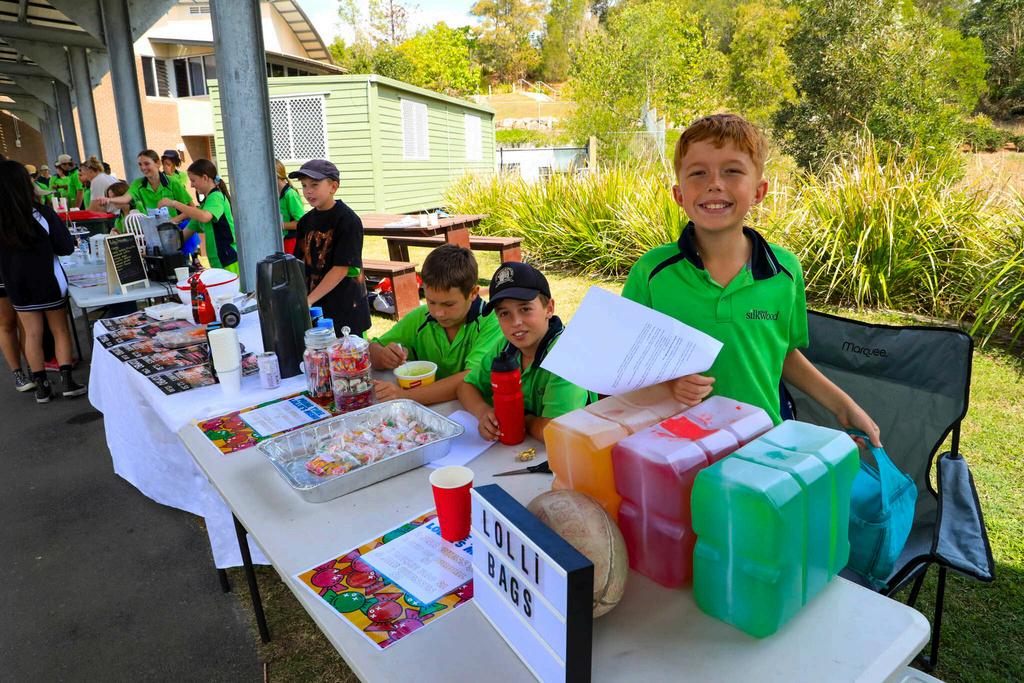

At Silkwood we recognise that ALL young people are musical! Alongside this research shows that music education engages complex neural connections and coordination between different brain regions. This improves cognitive functioning, motor skills, spatial awareness, attention span, language and reading skills. These benefits positively impact a young person’s overall learning and development.
For these reasons we are committed to delivering a high-quality music program. This program is overseen and delivered by specialist music teachers and has three focusses:
A weekly year-level music program from Prep to Year 7 develops foundational rhythmic and melodic skills essential for musical literacy.
Running alongside the musical literacy program is our year-level developmental instrumental music program. This program starts with students playing the recorder and progresses to each Year 3 student learning a classical stringed instrument It culminates in Year 6 with African drum making and playing.
From Year 3 onwards, students can also choose to join our ensemble, orchestra, and band programs Silkwood supports this with an after-school program offering private lessons in guitar, piano, and classical strings..


From Prep to Year 12, singing is an integral part of everyday learning and is incorporated into our school festivals and transition ceremonies. In Year 4, we focus on a choral immersion year, highlighting the power of harmony and song. School choirs are offered as elective options starting from Year 1.
Our choirs, ensembles, bands, and orchestras participate in eisteddfods and bring together a bi-annual music concert to perform and showcase their efforts. They also add musical magic to our school festivals and transition ceremonies.
Learning to master a second language is healthy for a young person’s development. Not only is it a challenge to learn to speak another language, but it also brings a more profound respect for other cultures and people who immigrate and have to learn English
We have chosen Italian as our foreign language program. In Prep to Year 7, students participate in an Italian lesson once a week It is offered as an elective in Years 8 – 12
The Italian teacher works with year-level advisories to include Italian-speaking and cultural opportunities where possible


Being physically active is an important part of wellbeing and a healthy lifestyle. Everyone has the capacity to improve their physical agility Our Sport and Games Program involves developing important physical agility and learning to play games and sports.
In the Junior School, this begins with old fashioned street games that use simple rules focused on building important physical skills and agilities.
In the Primary School, it builds into games that require more agility and, therefore, practice to succeed
Moving into the upper primary, middle, and senior years, we introduce competitive sports with complex rules and physical activities that require discipline to master.
In the Exploring Program, Advisors link learning (where age-appropriate) to real-world competitions to help create a sense of adventure with their learning. Whether it is a competition for:
Chess Debating Sport
Art Dance E-Sports
Drama Literature Music Events
We encourage students to give it a go win some, lose some as this helps build their resilience. It's a great way to foster life skills and personal growth.
All of this brings Exploring Learning time to life in meaningful and developmentally appropriate ways.


Discovery Learning time takes students on a journey of self-discovery through personal and social development pathways that support them to develop their capabilities around:
Learning how to learn
Self-regulation
Social, emotional, and physical wellbeing
Conflict resolution
Effective communication
Collaboration and teamwork
Personal awareness
Intercultural connections
Advisors choose the skills and content for discovery time based on the goals outlined in their Advisory Learning Plan (ALP) and their students' personal interests. During start-up week, they collaborate with their students to establish group and individual discovery goals within their Individual Learning Plans (ILPs).
Advisors plan and progress these goals through:
Daily check-in and check-out sessions
Weekly discovery lessons and workshops
Town Halls (whole year-level meetings)
Incursions, excursions, and camps.
To progress these goals, Advisors and students use:
Reflective and Restorative Practices
Philosophical Inquiry
Real-world adventures
Inspiring stories
Outdoor learning
Age-appropriate social and personal development programs
Growth Mindset and Habits of Mind practices
These practices support students to develop their self-awareness and improve their relational skills by:
Building their personal reflective skills
Engaging them in resolving conflict through restorative practice. This school-wide practice uses reflective dialogue to get to the ‘heart’ of why something has happened, focuses on ways to move forward, and accountability to repair any harm caused by behaviour.
Philosophical inquiry is a practice that uses a student’s natural desire to be a budding philosopher to develop their creative, rational, and critical thinking capabilities
Here, students work together to deeply consider fundamental questions without defined answers about existence, reality, knowledge, ethics, or other big life questions Through this process they reflect on their beliefs, assumptions, and arguments while learning to confidently articulate their perspectives and engage thoughtfully with diverse viewpoints.
This is done in developmentally appropriate ways:
JUNIOR SCHOOL
Leveraging a young child's natural sense of wonder and curiosity about the world around them.
MIDDLE SCHOOL
Engaging students' natural inclination to argue through challenging questions that help them explore their identity
PRIMARY SCHOOL
Tapping into a student's natural desire to learn more about themselves through selfexploration activities.
SENIOR SCHOOL
Encouraging a student's natural desire to be rational thinkers and express who they are.
Adventure is important for healthy child development Unfortunately, modern lifestyles impact this with screens that entertain the mind and immobilise the body. Our RealWorld Adventures have been designed to bring balance back to this area and develop a healthy mindset towards engaging with nature and facing life challenges – it is an integral part of Discovery Learning.
We do this through a series of extended adventures (away from school and home) that begin in Year 2 with locations thoughtfully selected to support students in growing their:
Independence from home
Collaboration and deeper connection with their peers
Confidence through an authentic and safe experience outside their comfort zone (home)
Self-awareness of their relationship to our country.

“We are eternally grateful for such a unique experience that we will treasure and pull knowledge from for the rest of our lives.”


It culminates in Year 12 with an unforgettable adventure to the red centre of our beautiful country – a memory that leaves a lasting impact on a young person’s life.
Our Real-World Adventures are designed to be developmentally appropriate, inclusive for every student and offer the right level of challenge to safely develop character and confidence for the age group. This means that although they have an element of fun, the intention is to engage students in adventures where they face significant ageappropriate challenges that they need to overcome In taking this journey, students get an authentic opportunity to stretch their capabilities, build resilience and apply a growth mindset to a significant challenge.

Inspiration gives us hope and the spirit to discover more about ourselves and life. For this reason, Discovery Learning immerses students in life wisdom by engaging them with inspiring life stories. This begins with the Advisor selecting age-appropriate stories linked to developmental themes in the early years and builds to student-selected connections in the Senior School
We know that grounding students in nature is a vital strategy for wellbeing and healthy development, so in Discovery Learning, we actively focus on getting students outside and connecting to nature. We do this through deliberately planned outdoor check-in/out activities or discovery lessons as part of a student’s timetable every week.
As part of Discovery Learning, every year level runs age appropriate social or personal development programs or workshops. These programs are selected for alignment with The Silkwood Way approach, best practices, and positive outcomes for students.
Examples of these are:
Rock and Water Time and Space
The Hero’s Journey The RITE Journey
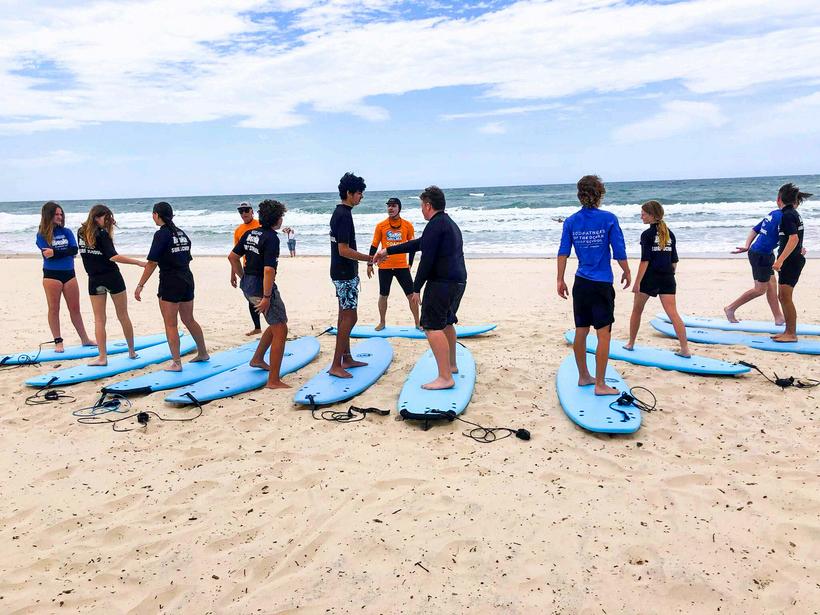

Throughout the entire learning program, Advisors use:
The Habits of Mind which are a defined set of behaviours that help students think critically about how they learn and
A Growth Mindset which is the belief that abilities can be developed through dedication and hard work.
To make learning visible, foster critical thinking about how they learn, and build resilience towards continuous personal growth. In discovery learning time, they focus in ageappropriate ways on lessons to explicitly lay down the foundations and deepen the understanding of how this helps a student with their learning and in life.
Reflective and Restorative Practices
Real-World Adventures
Outdoor Learning
Philosophical Inquiry
Inspiring Stories
Growth Mindset and Habits of Mind
Age-Appropriate Social and Personal Development Programs
All of these bring together an advisory and individual Discovery Program for each student.
Personal Interest Learning Time is project-based learning that empowers students to delve into their interests and links them with real-world learning experiences. It's designed to offer students the chance to:
Cultivate entrepreneurial, critical, creative, and business thinking skills
Explore their ideas, interests, and passions
Recognise the possibilities and connections for real-world work based on their ideas and interests.
Every student at Silkwood works on personal interest projects in developmentally appropriate ways. For this reason, it looks and feels different on each campus.



In Prep, PILT begins simply by focusing on an Advisor-planned project designed to support students in exploring their interests through play-based learning and provocations. Students begin developing the skills to manage their own project through this work. This work continues into Year 1 where, if a student is ready, with guidance from their Advisor, they begin to design their own or group projects.


he Advisor supports students to delve more ir interests by guiding them through smaller then transitioning them, when ready, into own Personal Interest Project. Here, they h their Advisor to learn how to design a project interests and set PILT goals in their Individual LP)
In Middle School, PILT projects gain rig mentors and real-world connections. choice and leadership, Advisors facil resulting in sophisticated project pl durations, real-world mentors, and deep


When students reach the Senior School, their Individual Learning Plan (ILP) is mainly dedicated to PILT, including a Learning Through Internship (LTI) project and activities focused on developing their graduation portfolio.
Personal Interest Learning Time (PILT) projects are developed using a simple Planning Cycle:
EXPLORE INTERESTS AND IDEAS
REFLECT AND REVIEW
All students engage in the PILT Project Cycle. The processes in each step are developmentally appropriate and reflective of the PILT journey, so they look different at each year level
EXHIBIT PROGRESS

DEVELOP A PROJECT PLAN
CONNECT TO REAL WORLD LEARNING
ENACT THE PLAN
THE PLAN
All students engage in the PILT project cycle. The processes in each step are developmentally appropriate and reflective of the PILT journey, so they look different at each year level.


THE PILT PLANNING CYCLE IS STRUCTURED AROUND A PILT PROJECT PLAN, WHICH INCLUDES:
A thought-provoking question that provides direction and depth to the project. Instead of simply studying butterflies, we explore questions like, ‘How do the colours of a butterfly effect its life and those around it?’
Each project sets five learning goals drawn from the learning progressions. These focus and add rigour to the project by outlining 'what' the student aims to learn.
An ongoing plan that shows their fortnightly actions to progress their project. ACTION PLAN 2 3
While Advisors assist students in advancing their projects and guide them on developing and following their plans, they are not expected to be experts in the project's subject matter. Therefore, an important aspect of project planning is for students to seek mentors with expertise in the project's focus These mentors can offer guidance and help students progress their projects.
The project template and cycle ensure that PILT projects are not simply ‘a fun thing to do’ but have rigour, depth, and purposeful learning
Fostering links with real-world learning is vital for developing students’ entrepreneurial spirit and creating a meaningful connection to real life through their projects.
In the Junior and Primary Schools, real-world learning experiences are fostered through excursions, incursions, community mentorships, peer support, and lunch clubs, enhancing understanding and exploring their project interests.
In the Middle School, students acquire the valuable life skill of seeking and utilising expertise from mentors within their field of interest. This may involve formal mentorships, shadowing experiences, and opportunities to expand their learning during Personal Interest Learning Time.
In the Senior School, this process develops to include more complex or advanced Learning Through Internship (LTI) opportunities, a fundamental part of the seniors' Personal Interest Learning time. All senior students are expected to be out-learning in an LTI twice weekly
LTIs are the gold standard of mentoring for PILT projects. They are what we work towards with our mentoring program They are designed to build knowledge, understanding and skills in the context of authentic work related to a student’s PILT project. They differ from work experience as they are real workplace projects created by the student under the direction of a workplace mentor.


To support the PILT mentorship process, Silkwood has dedicated Real-World Learning Coordinators. They support Advisors and students in making connections with realworld mentors. They also oversee the administration needed to ensure students are safe and mentors meet the school's compliance measures.
The best part of my role is helping students connect to real-world learning experiences directly related to their passions and interests. It is such a rewarding and positive experience to see them learn in this space, and what these young people get to do in Years 11 and 12 at Silkwood is truly special – it is an exciting chapter of their learning journey!
TAI HOOD, REAL-WORLD LEARNING COORDINATOR


A vital part of our Learning Design's success is ensuring each student is well supported and that personalised learning can flourish. Research shows that smaller schools and classes are essential to making this happen.
For this reason, using the well-researched Big Picture Education advisory approach, coupled with our developmental approach, we have designed The Silkwood Way Advisory Model. This model is focused on keeping our school campuses and classrooms small, personal, and connected
Our campus and learning program is designed into:
Consisting of around 250 students aligned to a developmental phase.
These communities are then broken into 2 or 3 year learning cycles relevant to a developmental stage
Students then work together in year-level groups of around 18 with the same teacher (Advisor) for each learning cycle – this is called an advisory.


Our Learning Communities and Learning Cycles are set in the following ways:
LEARNING COMMUNITIES LEARNING CYCLES
Early Learning
Junior School
Primary School
Middle School
Senior School
Virtual Learning and Alternative Pathways
Kindergarten
Prep - Year 1
Year 2 - 3
Year 4 - 5
Year 6 - 7
Year 8 - 9
Year 10 - 12
Year 4 - 12 (multi-age)
An advisory student-to-teacher ratio is set to allow Advisors time to get to know each student and for students to get to know each other well. Ratios are set as follows:
PREP – YEAR 1
In Junior School, advisories have 22 students with an Advisor and an Assistant. This gives a student/staff ratio of 1:11
YEARS 2 – 12
In Primary, Middle, and Senior School, advisories have 18 students, providing a student/teacher ratio of 1:18 For students identified as needing a smaller learning group to progress their learning, we have advisories with lower student/teacher ratios for each year level.
ALTERNATIVE
In these programs, advisories have a range of 10–18 students, depending on learning needs. They work in Primary, Middle, or Senior School advisory multi-age groups.
A campus Principal or Head of School oversees each Learning Community and leads the teaching team in implementing The Silkwood Way. They work alongside the Strategic Leaders, Administration, and Site Teams to ensure the day-to-day operations run smoothly They bring leadership teaching expertise and foster positive partnerships between students, families, and Advisors.
Each advisory is led by an Advisor who is more than a teacher.
Not only is an Advisor a:
Qualified Teacher
Specialist in teaching strategies for the age group they are working with Specialist in planning, delivering, and assessing TSW learning program.
They also act as case managers working in partnership with the teaching team, students, families, and the broader community to:
Differentiate, individualise, and personalise a student’s learning
Connect a student’s learning to real-world learning opportunities
Support students to progress their learning goals
Focus students on behaving in ways that support their wellbeing and learning progress.

The Silkwood Way’s advisory approach moves the traditional student-teacher relationship into a partnership between an Advisor and a learner and keeps our schools small, personal, and connected


While learning is exceptional every day at Silkwood, we have designed special Silkwood traditions to connect, acknowledge, celebrate, and honour students on their Silkwood journey.
These moments are designed to:
Create unforgettable memories for young people to draw on as meaningful support throughout their lives, which we call ‘peak moments’
Provide significant whole learning community developmental experiences
Deepen intercultural and natural world connections.
They include:
Termly festivals
Transition and Graduation ceremonies
Student birthday celebrations
Culminating events that are part of our Learning Program
Whole campus days that engage students in activities to use their thinking and creative skills
School-wide events that honour specific groups of people, i.e. Grandparents Day Australian or world celebrations that align with our learning program.

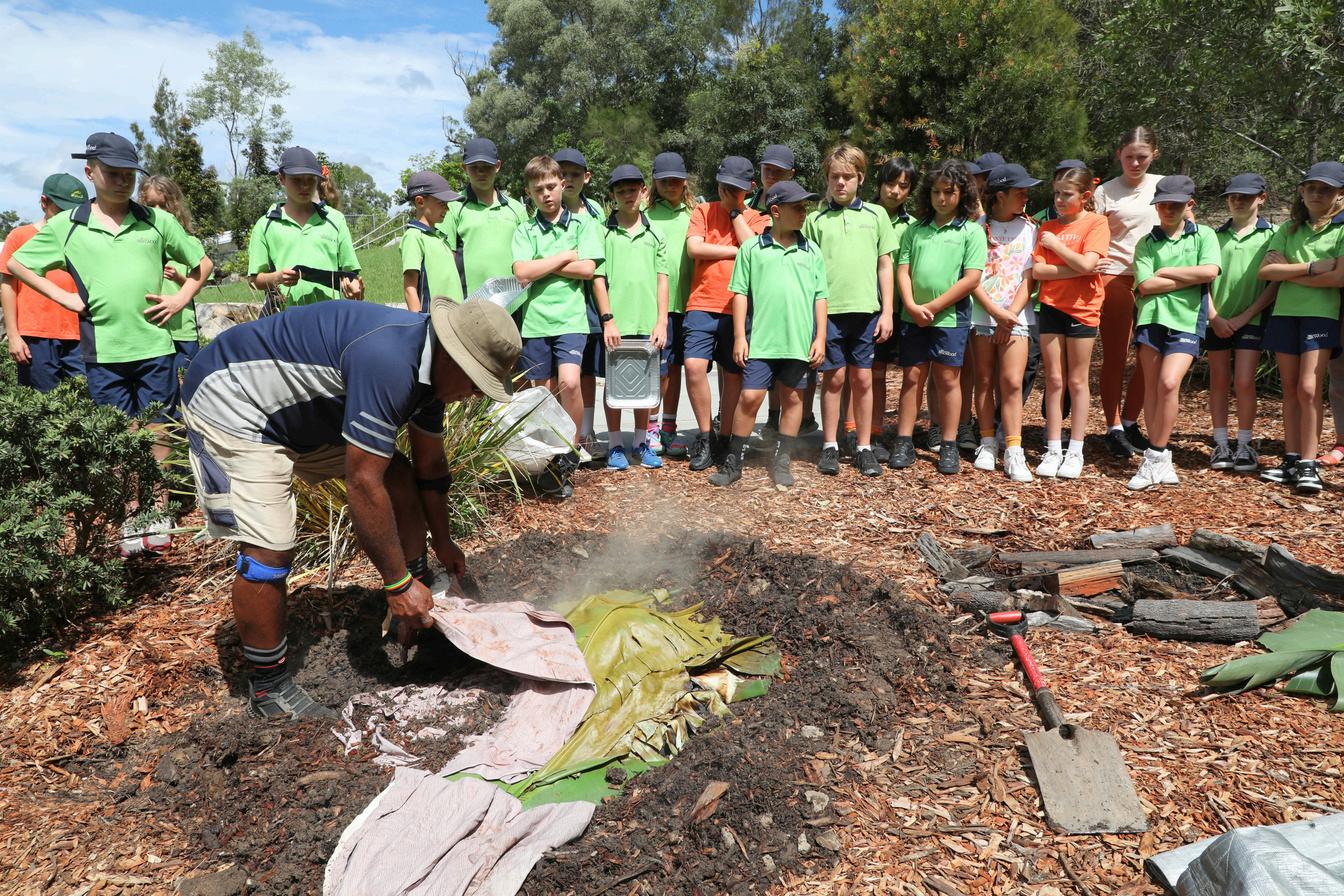
SILKWOOD CELEBRATES THE CLOSE OF EACH LEARNING TERM WITH A STUDENT FESTIVAL. TERMLY FESTIVALS
Harmony Festival
We honour the diversity of world cultures through the gifts that making and sharing food brings.
Dreaming Festival
In an acknowledgement to country, we honour the traditional custodians of this land in a festival celebrating indigenous culture.
We welcome in the cooler months with a visually beautiful festival celebrating light and fire. Festival of Light
Festival of Water
We welcome in our warmer days with a festival where we give thanks for the fun, wonder and life that water brings.
Celebrating these festivals enriches school life and the schooling experience by uniting the school community, connecting to nature, and nurturing a reverence often lacking in today's fast-paced, modern world.


To honour the transition from one learning community to the next, we celebrate with a specially designed age-appropriate ceremony. These ceremonies include song, story, individual words for each student and a forever keepsake.
YEAR 1 YEAR 5
YEAR 9
2
YEAR 6
YEAR 10


Bringing the Silkwood learning adventure to a close is a significant chapter in young people's lives; we treat it as such.
Once students have completed their final senior exhibition, we mark the closing of their time at Silkwood with a graduation ceremony. This ceremony is a celebration of the Silkwood adventure in its entirety, a time of closure and well-wishes for new beginnings.
We take time to acknowledge each student's individuality with a special gift, words, story and song as we come together and wish them the best for their new beginnings.


Each learning community has a unique developmental phase drawn from modern and educational developmental psychology. They bring an age-appropriate focus, approach and feel to the learning and help Advisors plan and respond to students in ways that support them in feeling affirmed and cared for
In this phase, we are building the foundations for vital physical and brain development. These foundations are needed to grow creative, critical, and rational thinking skills and to support future physical growth
For this reason, in the early and junior learning programs, we focus on learning through exploring the natural world, self-directed play, movement games, kinaesthetic activities, music, oral storytelling, singing, cooking, arts and crafts and inquiry provocations This strengthens a young child’s physical growth and nurtures the imaginative faculties they need for future development.


NOURISHING CREATIVITY – Developing a sense of self through history, the natural world, and the arts
In this phase, a child’s imagination grows into a hunger to know ‘what’ the world is all about - it is a time of inquiry: How? What? Why? When? and What for? We balance this quest for knowledge with learning through the arts and our natural world, allowing the foundations of imaginative thinking to grow into creativity.
Primary school learning focuses on enlivening creativity using traditional stories, outdoor exploration, and manual, visual and performing arts. They deep dive into ancient periods of history and real-world work of old, exploring and constructing learning from both historical times and the student's own world, dispositions, and interests.

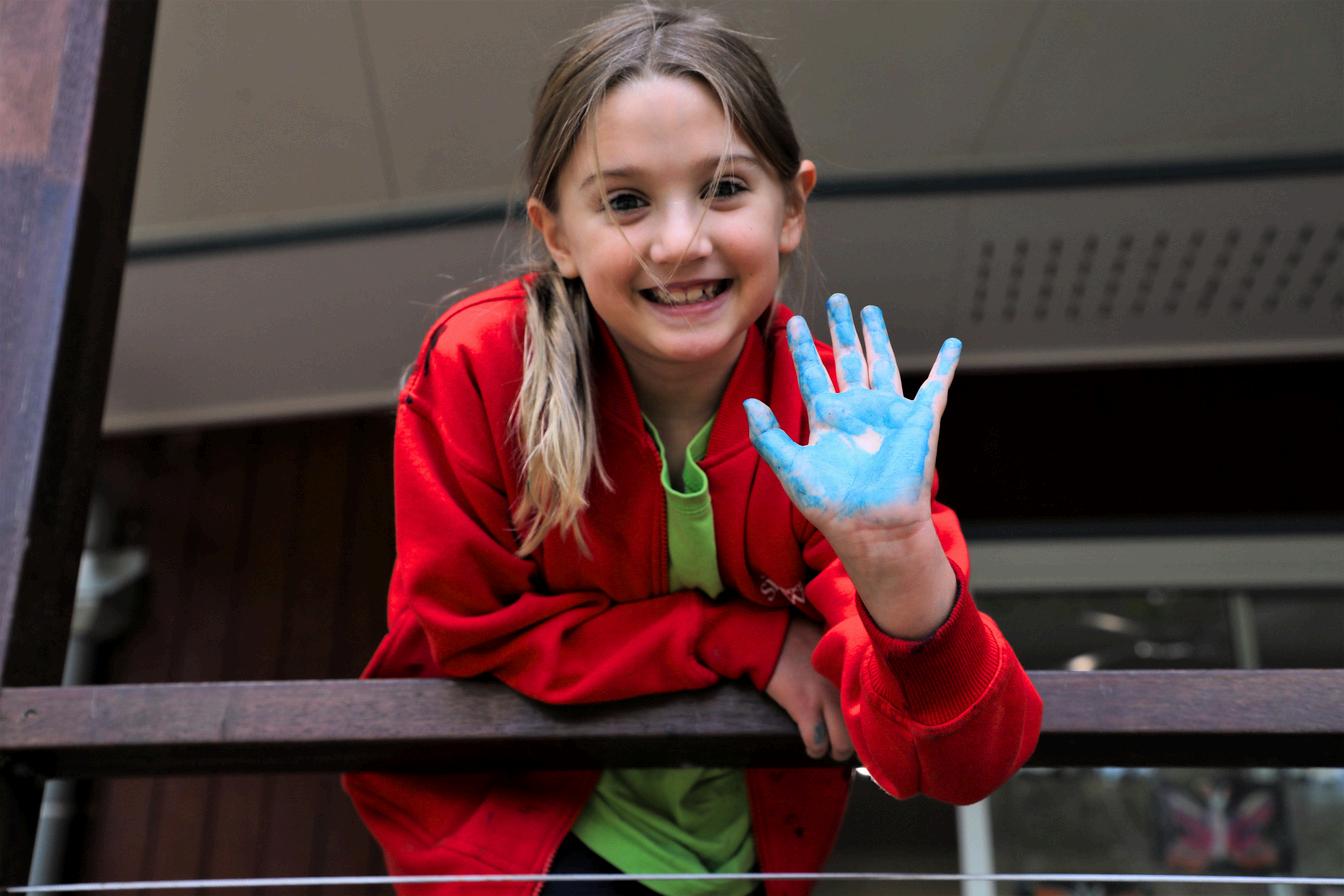
ADVENTURING WITH LIFE – Exploring who I am and what I stand for
Middle school is a time of growing independence and self-discovery, amidst rapid physical changes that can be sensitive and self-conscious.
Students require a learning program that balances self-focus with experiences that encourage risk-taking, exploration, and challenges that lead to personal growth. Our Middle School program is designed precisely for this purpose. We lead students on adventures that build confidence through challenge and use content to engage them in debate bringing them to self-reflect and think about who they are and what they stand for.
They explore the lives of discoverers and changemakers, engage in community projects, dive deep into their personal interests, and go on adventures These experiences lay the groundwork for discovering their identities, sharpening their critical thinking skills, and cultivating resilience to face life's challenges.



USING MY VOICE - Expressing who I am, exploring my life possibilities.
In senior school, they are building on their growing sense of identity and are more than ready to explore their expression of this in their lives.
We respond to this in the Senior School by immersing our emerging adults in the complications of real-world projects and life-changing experiences and exploring their own unique pathways to their future.
This is their learning program. One that treats them like adults and shows them they are more than capable of doing great work in the world – the world is their oyster, and we empower them to learn from that space.


Creating the right atmosphere for our students to engage with and progress their learning is equally important as providing students with engaging learning experiences This is what our Student Learning Culture is all about – creating an environment that enables students to:
Self-manage
Focus on learning
Learn together respectfully
Strengthen and support their social and emotional development.
Research shows that the best way to support students' mental and emotional well-being is to engage them in learning that they feel is meaningful to their lives.
Our students’ Individual Learning Plan (ILP) does just that and is the focal point for our Student Learning Culture. We start from this place to grow our student culture and circle back should challenges arise.
WE UNDERPIN THIS FOCUS WITH THE FOLLOWING:
Setting behaviour expectations and processes aligned to and reflective of the developmental phase of the student.
Striking a balance between rules, nurture and care We place Values and Guiding Principles at centre stage rather than rules and consequences.
We understand that behaviour can be improved and progressed We view this as a valued learning process.
A practice that uses reflective dialogue to get to the ‘heart’ of why something has happened focuses on ways to move forward and accountability for repair to any harm caused by poor behaviour.
Young people want to learn – it is innate in them – therefore, our role is to help them discover and learn more about themselves through:
Understanding their impact
Developing a respect for self, others and their world
Developing mature communication and behavioural responses
This empowers them to become self-aware and take responsibility for their actions. We see this as the gateway to being able to thrive in the world.
To achieve this, we approach behavioural development as an integral part of learning at Silkwood Just as students set goals for their learning, they also set goals to develop the personal skills they need for:

HEALTHY THINKING

POSITIVE HABITS

ENGAGEMENT WITH THEIR LEARNING

CONNECTING WITH OTHERS


The centrepiece of our Student Learning Culture are our Student Values – these focus on behaviours that support a safe and caring learning community
Each learning community expresses ‘what we mean’ by these values through ageappropriate Guiding Principles.
Our Student Values and Guiding Principles define our expectations for student behaviour through a positive framework rather than a rules-based approach.
When students do not honour our Guiding Principles, we begin with a discovery discussion The purpose of which is to:
Engage students in their responsibilities of Learning in the Silkwood Way and Support students in making positive changes and the right choices for themselves and others
These discussions may be as simple as refocusing students' attention and reminding them of their responsibilities and expectations or may require a more complex discussion around changes needed to their ILP to:
Improve their learning engagement.
Support them in aligning their behaviour with our Guiding Principles.
This is a deliberate shift away from traditional schooling that uses the following strategies to manage student behaviour:

Teacher-driven classroom management strategies.

ANDRules, punishment and rewards to manage behaviour.
In contrast, Learning in The Silkwood Way works in partnership with the Advisor, student and their family to put...

A student’s engagement and progress with their learning plan

ANDRespect for our Values and Guiding Principles
...at the centre of supporting young people to become responsible managers of their own behaviour. This is the cornerstone of success when Learning in The Silkwood Way.


It is important to note this approach does not mean we have no rules - we do.
In any environment, rules are needed for organisational and personal safety; we are no different The Silkwood Way difference with rules is that they are kept to a minimum and well-considered to ensure they are absolutely needed and that they:
Can be easily understood by a student
Have a clear ‘why’ as to why they are needed
Have a clear consequence for any breach that can be applied consistently.
This ensures we do not slip from an authoritative to an authoritarian approach.
In a Nutshell...

At Silkwood School, an authoritative behaviour approach means we strive to create an environment of mutual respect between students and educators We set clear and consistent expectations, encourage open dialogue, and value student input This empowers students to understand the reasoning behind guidelines and take ownership of their actions, fostering independence and self-regulation Rules and consequences only come into play when safety and/or compliance (legal) are put at risk

In contrast, an authoritarian behaviour approach — which we avoid would involve strict rules enforced without discussion or student input, prioritising obedience over understanding. Such an environment can stifle communication and creativity and discourage developing critical thinking and self-discipline, qualities we actively cultivate in our students as part of The Silkwood Way.
If you believe that tests and exams are the ultimate measure of student success, The Silkwood Way will revolutionise your perspective! We purposefully steer away from this traditional approach.
WHY? Because research indicates that while assessment is vital for gauging progress, the ‘way’ we assess can significantly impact student wellbeing and learning engagement.
For this reason, The Silkwood Way prioritises formative assessment through our progressions to drive student growth. Unlike summative assessments, which gauge learning at the culmination of an instructional period, formative assessment constantly tracks progress and tailors learning to current needs This method underscores ongoing development rather than static performance evaluations, fostering a culture of continuous growth.
Learning progress is, therefore not confined to a single moment, such as a bi-annual report card or a solitary exam score. It is an ongoing journey embedded within each student's Personal Learning Profile (PLP), illuminated through the student learning progressions. Parents can track their child's growth at any time by accessing their PLP, ensuring transparency and continuous insight into their development


In addition to tracking progress through the student’s PLP, every semester, each student holds an exhibition for their Advisor, family, and other invited guests to:

SHOWCASE THEIR PORTFOLIO OF LEARNING

SHARE THEIR PROGRESS ON THEIR GOALS

SEEK FEEDBACK ON THEIR LEARNING
Student-led exhibitions are a well-researched, authentic, student-focused approach to assessment. They replace traditional parent-teacher meetings with more relevant and indepth feedback on student progress and significant connections for students to their learning progress.
Students are supported by their Advisors to prepare their exhibition They invite their parents/carers, mentors, Advisors, and other people (of their choosing) to participate in their feedback panel.
Students begin these in Prep with a guided exhibition format and, over time, grow their skills to a very sophisticated exhibition in their senior school years. Student improvement in learning and presentation of their progress is evident from one exhibition to the next.
Silkwood complies with the standards set out for all accredited schools, which requires publishing semesterly formal report cards to parents and carers. These traditional report cards are a point-in-time capture of learning achievements. They do not provide an authentic assessment of progress. Families are sent the link to their young person’s mandated report card at the end of term two and four. Our student-led exhibitions replace traditional Parent/Teacher interviews; however, if a parent wishes to discuss their young person’s progress with their Advisor, they can make this request anytime.
As part of our accreditation, Silkwood is required to participate in Years 3, 5, 7 and 9 NAPLAN testing. These are formal tests that students sit under test conditions. Parents can formally withdraw their young person from sitting these tests. Although we generally do well in these tests, we find them of no use as a measure of student learning Our assessment processes outlined on the following pages offer more precise insights into student growth and development than a one-off, point-in-time standardised assessment such as NAPLAN For this reason, Silkwood does not actively encourage participation innor do we prepare students for or teach to NAPLAN tests to improve individual and school results.
“We are passionate about how we do senior school differently and setting ourselves apart from standardised subject-based testing regimes of traditional senior schooling.”
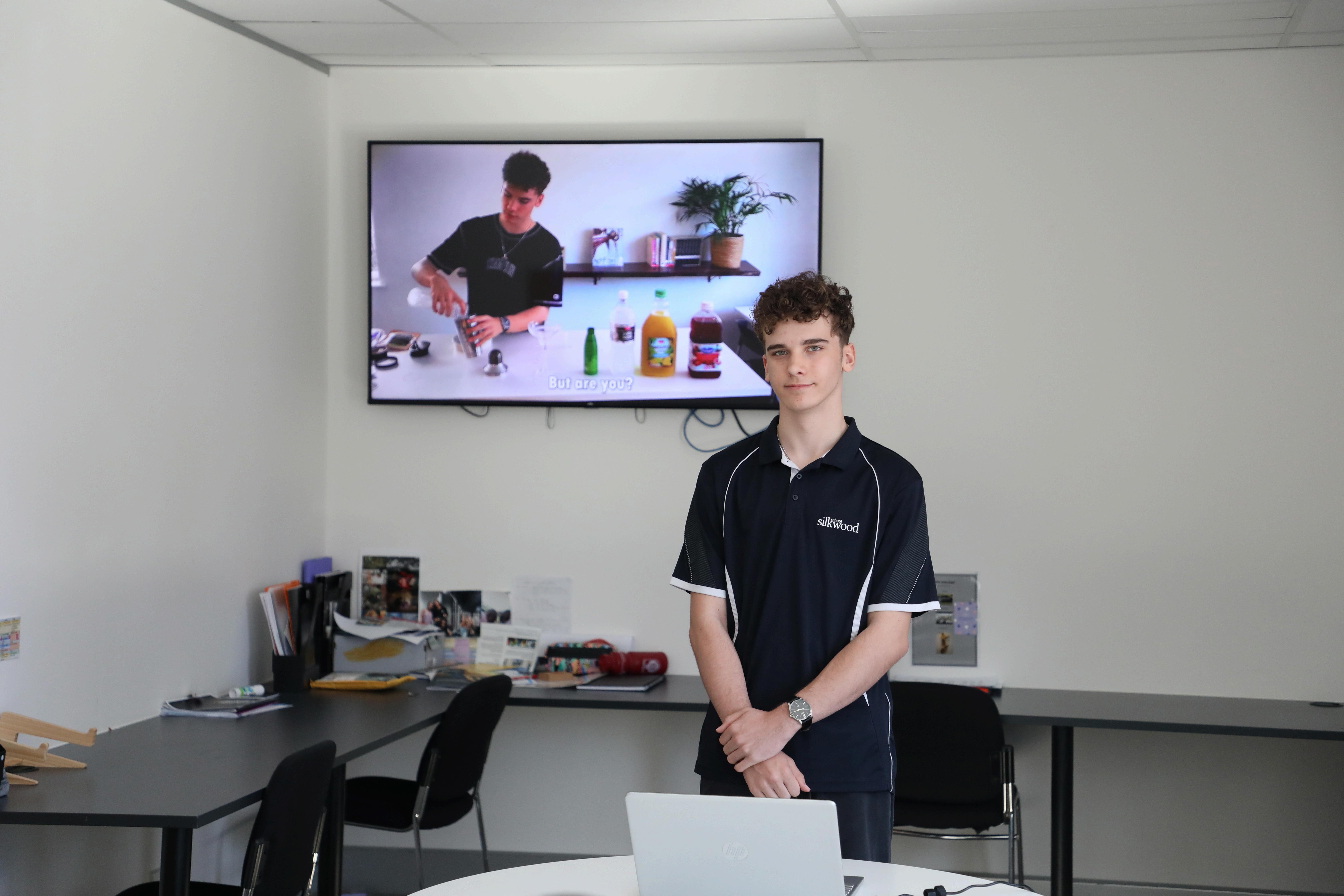

We are passionate about how we do senior school differently and setting ourselves apart from standardised subject-based testing regimes of traditional senior schooling.
Our focus on personalised learning plans based around a student's interests, needs, and 21st-century skills guides a student onto their life path more efficiently, confidently and in more meaningful ways than traditional schooling.
We understand this difference is a significant change to what people are used to and expect to see in a senior learning program. As a result, many people find themselves wrestling with questions….
“WHAT
SILKWOOD? ”
“WHAT IF THEY WANT TO GO TO UNIVERSITY?”
“WILL CHOOSING TO DO SENIOR SCHOOL DIFFERENTLY DISADVANTAGE A STUDENT?”
These are great questions, and we have many years of fantastic Year 12 results to help ease these concerns. These results allow us to be bold enough to declare that The Silkwood Way authentically gives students a head start in life


“Young people’s schooling time is valuable –What better gift to give than honouring this time by allowing them the opportunity to explore things they are interested in, try out real-world work and learn things useful to help them thrive in the world.”
VALERIE CAMPBELL-HOGG CEO & FOUNDER OF THE SILKWOOD WAY
Unbound from mandated senior school subjects, our senior students have the gift of time and flexibility to authentically explore possibilities for their future. Post-school pathways are not a fixed plan that students are locked into from Year 10 or something they need to figure out.
Whether a student wishes to be:
The Silkwood Way personalises a meaningful pathway to support them in getting there.


OUR GRADUATE PORTFOLIO INCLUDES:
To support this every senior school student – as an extension of our PLP – completes a Graduate Portfolio.
Our Graduate Portfolio includes:
A SENIOR THESIS PROJECT
SERVICE-LEARNING PROJECT
A SERIES OF LEARNING PLANS AN AUTOBIOGRAPHY
A SERIES OF PROJECT EXHIBITIONS
LEARNING THROUGH INTERNSHIP PROJECTS
STUDENT VIDEO PROFILE
A POST-SCHOOL PROJECT OR UNIVERSITY OR TERTIARY STUDY PATHWAY

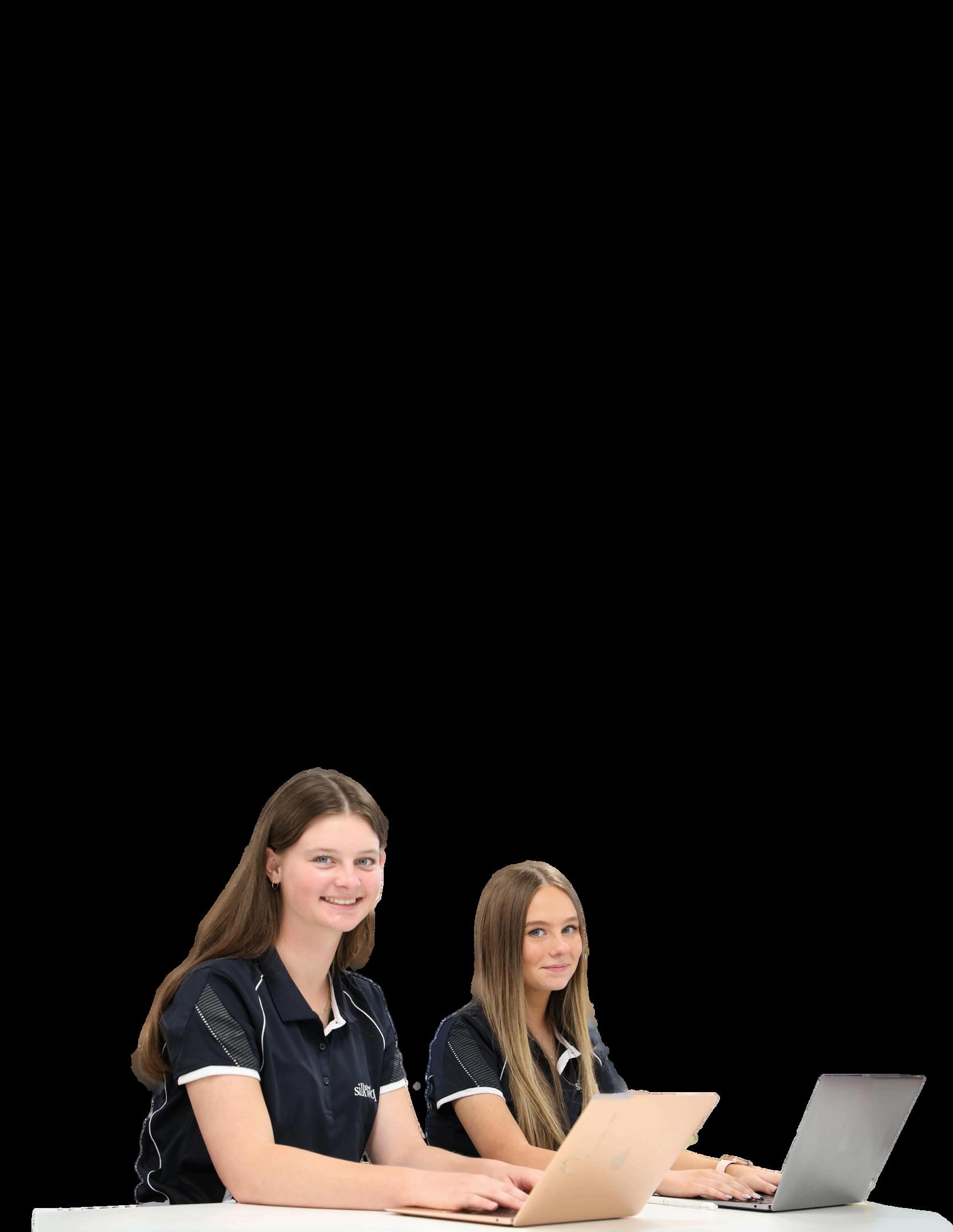
The Graduate Portfolio is an integral part of our senior students’ success.
It is a compilation of a student's work from Years 10 through 12 and demonstrates their capacity to explore, research, and develop as learners in their fields of interest.
The Graduate Portfolio allows our students to move beyond standardised government success measures of schooling. It is important to understand that this is not an easier assessment pathway for senior schooling; it is a comprehensive body of work requiring as much commitment and effort as traditional methods. However, this effort is rewarded with a more authentic, engaging, and meaningful way to demonstrate a student's talents, skills, and achievements
Silkwood graduates use their portfolio to pursue diverse and exciting post-school pathways, spanning employment, vocational education, or university routes Yet, its significance extends beyond these avenues. The portfolio serves as a compass, guiding students toward lifelong learning and nurturing their interests, dreams, business acumen, personal growth, and community engagement. It transcends mere test scores on paper, embodying a more empowering approach to education and preparation for life beyond the classroom
Since the opening of our Senior School in 2021, 100% of our graduating students who pursued a university pathway were accepted Remarkably, most of these students received their acceptance well before other Year 12 students even began their exams. We believe this is an incredible achievement!
Our success stems from using the Graduate Portfolio to secure direct entry into universities, bypassing traditional schooling qualifications This approach is unique to us, as it requires a significant time investment and individualized student programs, which many schools are not equipped to offer.
Given our outstanding success with direct entry pathways, we do not prioritise traditional qualifications like ATAR for university entrance at Silkwood.
While university pathways are needed for some students to pursue their passions and our results are great, what matters most to us is that our students leave Silkwood having explored many real-world pathways They know how to flex and pivot, turn ideas into action, and, most importantly, feel confident about the post-school pathway they have designed
Since the launch of our Senior School program, we are very proud that our students have transitioned to life after school, pursuing their passions in the following ways:
11% started a business as part of their TSW journey.
7% embarked on global adventures.
27% secured employment in their area of interest
55% enrolled in university or tertiary studies related to their passion.
TRAVELLING
EMPLOYMENT
100% OF STUDENTS WHO SOUGHT A UNIVERSITY PATHWAY WERE ACCEPTED!


Due to the success of our program, although we are an accredited Queensland school mandated to offer our senior students the opportunity to gain their QCE, we do not focus on QCE. At Silkwood, it is an opt-in program that students can include as part of their Individual Learning Plan.
If students choose to opt-in, they need to dedicate around 8 hours a week of their learning time, plus additional time at home, to complete the government-mandated subjects for this qualification. They will also be required to complete standardized assessments and sit external exams
Over the years of running our senior school program, we have found that the QCE has rarely, if ever, been needed for a young person’s future success. Therefore, we strongly recommend that students carefully consider this path, as it will compromise the time they can spend exploring their interests and passions.
At Silkwood, we recognise that students have diverse learning needs To cater to these needs, we use our personalised learning approach and unique Advisory Model.
Our Advisory Model provides support for students with learning needs in the following ways:
Each advisory has a Teaching Assistant who works with the children alongside the Advisor. This provides a low student/teacher ratio of 1:11.
Each year level has advisory classes with a student/teacher ratio of 1:18. Additionally, we offer lower student/teacher ratios for students who need specialised and/or extra support to help them progress. These classes are led by Advisors who are specialists in learning enrichment strategies.
Alongside this, each Learning Community has a dedicated Student Support Team. This Team provides professional guidance and support to Advisors, students and families should challenges arise.
The Student Support Team is engaged when a student:
Requires additional support to progress their Individual Learning Plan (ILP)
Displays behaviour that is negatively impacting their learning or others
Requires tailored learning interventions or adjustments within their ILP.
They work alongside the Advisor, student, and their family to determine the necessary ILP adjustments to help the student progress towards their goals. This process may include the following:
ADDITIONAL ADVISORY DIFFERENTIATION OR INTERVENTION STRATEGIES
Additional differentiation or intervention strategies are made to the Advisory Program to increase the personalisation of the Student’s Individual Learning Plan
Professional input from an educational, medical, clinical, or allied health specialist is required.
ENROLMENT IN TARGETED OR SPECIALISED LEARNING PROGRAM.
The student participates in a targeted support program or group for a specific learning need.
A MOVE TO A DIFFERENT YEAR-LEVEL ADVISORY CLASS.
The student would benefit from being moved to the year-level advisory with lower teacher/student ratios or from our virtual learning advisory.
If it is identified through this process that a student requires a change to their advisory to progress their learning, this move is supported with a transition plan We find that a student rarely has any challenges making this move. For them, it is often the first time they begin to thrive and progress in their schooling journey, as they have a highly personalised program designed to meet their learning needs.


At Silkwood, we advocate for young people to spend less time using technology and more time outdoors, being active and connecting face-to-face with people We see this as vital for a young person’s wellbeing, so we seek to minimise the time spent on digital technology.
To support this, the use of technology at Silkwood must meet two criteria:
In addition to meeting these criteria, it must also align with one of the following purposes:
Personalising learning to deepen student engagement; Develop digital skills to support digital fluency for the 21st century; Collaboration & administration to connect with others and help manage their work.
This framework for technology use ensures students are engaging with technology safely, in age-appropriate ways and for the purposes of progressing their learning.


All students in Years 4 to 12 supply their own technology device, as per the BYOD (Bring Your Own Device) Program. Details of this program are released to families in Term 4 each year for the following school year Device suitability outlined in the BYOD Handbook must be followed to ensure students can access required learning platforms.
For younger students, the school provides digital equipment to enhance their learning experience.

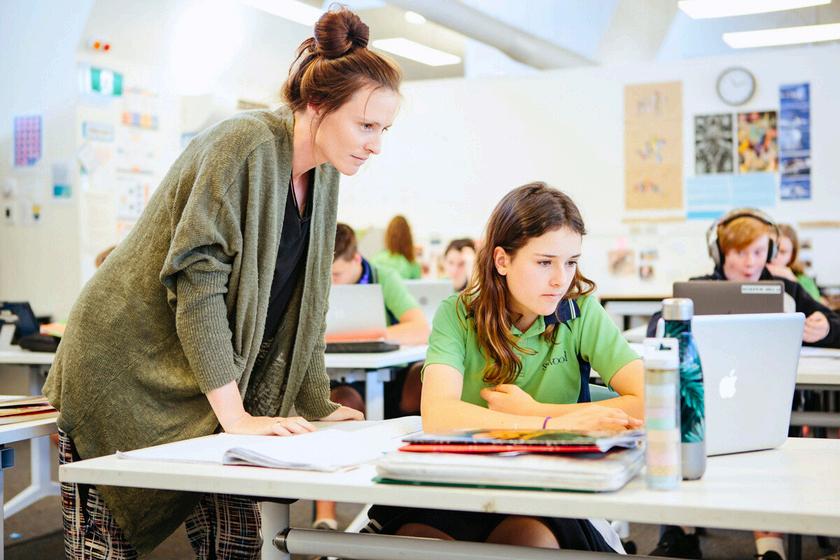
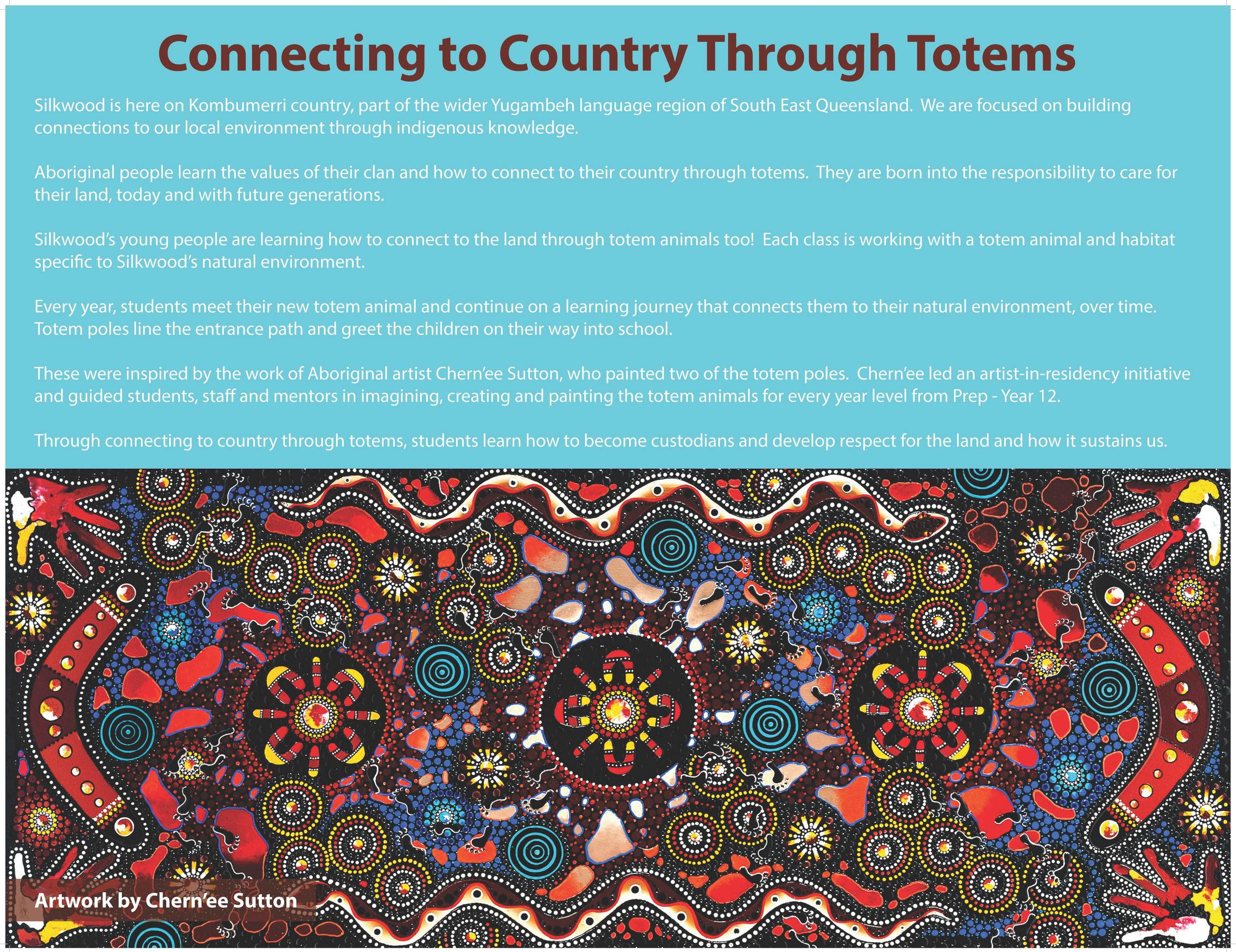
We acknowledge the Traditional Custodians of the land on which we gather, the Kombumerri people of the Yugambeh Nation, and we recognise their enduring connection to land, waters, and culture. We pay respect to their Elders, past and present.
We also give thanks for the knowledge and care the traditional custodians bring to our community and, as people on this land, honour our responsibilities to listen, learn and care about the connection to land, waters and culture.
At Silkwood, we welcome people from all walks of life who are committed to respectfully engaging with our community and supporting the The Silkwood Way
We are an inclusive and secular school that is not connected to any one worldview, religion, spiritual faith, political ideology, or belief system on life or health. This means our community is rich in diversity of beliefs, culture, and lifestyles We welcome this diversity and our role to create an inclusive and safe space for students to respectfully express and explore who they are.
Our overarching philosophy is that people are free to choose to live in ways they believe are best for them whilst respecting others, abiding by societal laws, and honouring community guidelines.


Our community values are:
COURAGEOUSLY GROWING, LEARNING AND LEADING
TO WORK IN PARTNERSHIP TO ACHIEVE THE SILKWOOD WAY AIMS
ACTING WITH RESPECT TOWARDS EACH OTHER
We pride ourselves on being a progressive school demonstrating that a transformative educational approach can co-exist peacefully alongside a traditional system. We see this as a living example of inclusivity, diversity, and modern activism. This gives us much to talk about with our students about finding peaceful and meaningful ways to bring together ideas and work together to make positive change to our world.
SAYING YES TO THE SILKWOOD WAY MEANS A COMMITMENT TO RESPECTFULLY ENGAGE WITH OUR COMMUNITY VALUES.



SAYING ‘YES’ TO THE SILKWOOD DIFFERENCE
It takes courage to step off the traditional path of education Choosing the Silkwood path is a thoughtful decision.
Whether you are a parent or carer considering enrolling your child, or someone looking to work with us, choosing The Silkwood Way means you are saying ‘YES’ to supporting a school with a unique and different purpose than traditional schooling.
The Silkwood Way Aims are at the heart of our Learning Design, supporting students in developing these ten capabilities:
THE SILKWOOD WAY AIMS:
To use creative, innovative, and critical thinking to make a difference
To accept life’s challenges with a resilient and flexible attitude. 1 3 5 7 9 2 4 6 8 10
To see the adventure, opportunity, connections, and possibilities in life
To create financial independence in win/win ways.
To communicate with empathy, openness, and integrity.
To turn dreams and ideas into reality.
To create a happy and healthy life balance.
To embrace fun and live with curiosity
To act with respect towards themselves, others and our world.
To use passion, talent, and skills to create engaging work that contributes positively to our world.
You are saying ‘YES’ to supporting young people to achieve The Silkwood Way Aims through personalised learning pathways that allow each student:
TO GROW AS PEOPLE WHILST EXPLORING THE POSSIBILITIES FOR THEIR FUTURE.
This is what stands Silkwood apart from other schools.
It is a powerful difference that can make an equally powerful difference to a young person's future - we know this as our student outcomes are extraordinary.


Choosing a school where students have:
A unique Personalised Learning Profile (PLP)
An Individual Learning Plan (ILP)
A dedicated Teacher (Advisor) who works with them for a two-to-three-year learning cycle
Small class sizes
Life preparation through real-world learning opportunities, connections, and mentors
Visible learning progress and student-led assessment
A personalised pathway to tertiary study and life after school.
Choosing a school that focuses on student self-development through:
A partnership approach with the family, student, and their Advisor
Developing a student’s awareness of self, others, and our world
Engagement in learning
Learning progress
Developing meaningful, real-world pathways to learn
THIS MEANS SILKWOOD DOES NOT LOOK OR FEEL LIKE OTHER SCHOOLS.
A school where you will NOT see:
A subject-focussed curriculum with specialist subject teachers
A focus on traditional qualifications or exams to measure student success
Traditional school facilities – we use the world as our campus
A timetable driven by standardised subjects, which is the same for every student.
At Silkwood, our value lies in our unique Learning Design. We invest in:
Developing our program – this keeps us transformative (evolving)
Low student-to-teacher ratios so personalisation can happen
Connecting students to real-world learning opportunities.
We are uncompromising on our differences; they set us apart, and we proudly stand firm on these
Becoming part of the Silkwood community means committing to saying ‘YES’ to supporting the Silkwood Difference and working in partnership with us to support students to learn in The Silkwood Way
Our commitment is that the Silkwood learning adventure inspires, connects and makes a difference in our students’ lives every day.
This is The Silkwood Way
The following terminology is used consistently throughout this document; please refer to this glossary to better understand the meaning and examples of The Silkwood Way language.
ADVISOR = TEACHER
ADVISORY GROUP
ADVISORY LEARNING PLAN (ALP)
HEAD OF SCHOOL
INDIVIDUAL LEARNING PLAN (ILP)
LEARNING COMMUNITY
A qualified Teacher who is also a mentor and guide for students, responsible for supporting personalised learning, goal setting, and tracking individual progress within the Silkwood Way Learning Design
A class group of students led by an Advisor, focusing on personalised learning, goal setting, and individual progress within the Silkwood Way Learning Design.
A termly planning cycle where Advisors set and review goals aligned with year-level and individual student learning goals to support student progress The ALP includes designing a learning program, regular assessments, and adjustments based on student progress.
The senior leader of a Learning Community, responsible for overseeing all aspects of school operations, learning programs, and the implementation of the Silkwood Way Learning Design
Personalised plans outlining each student's unique learning goals, support strategies, and progress.
Each school campus is divided into smaller schools of around 200 students, known as learning communities, to foster collaboration and support among students and Advisors.
LEARNING PATHWAYS AND PROGRESSIONS
LEARNING THROUGH INTERNSHIP (LTI)
MENTORSHIPS
PERSONAL INTEREST LEARNING TIME (PILT)
PERSONAL LEARNING PROFILE (PLP)
Sequences within The Silkwood Way Learning Journey that outline the steps each student takes to achieve The Silkwood Way Aims. These pathways are linked to specific 'progressions' of learning, which provide a structured, personalised roadmap tailored to each student's individual progress and development.
LTIs are workplace-based projects designed by students and guided by mentors, aimed at building knowledge, understanding, and skills in alignment with the student’s Personal Interest Learning Time (PILT) project. They provide authentic work experience beyond traditional work placements
Integral to The Silkwood Way Learning Journey, mentorships connect students with real-world mentors who guide and support their pathways and progressions, helping them apply their skills and knowledge practically and achieve The Silkwood Way Aims
Dedicated learning time for students to explore and develop their individual interests through self-directed projects and activities.
An evolving profile detailing a student’s identity, learning style, interests, attendance, behaviour, wellbeing, individual learning plans, and progress, guiding personalised education and tracking individual progress.
THE SILKWOOD WAY AIMS
These ten, 21st century skills and competencies guide our unique learning pathways and progressions, ensuring students develop a well-rounded skill set for meaningful and successful lives.
